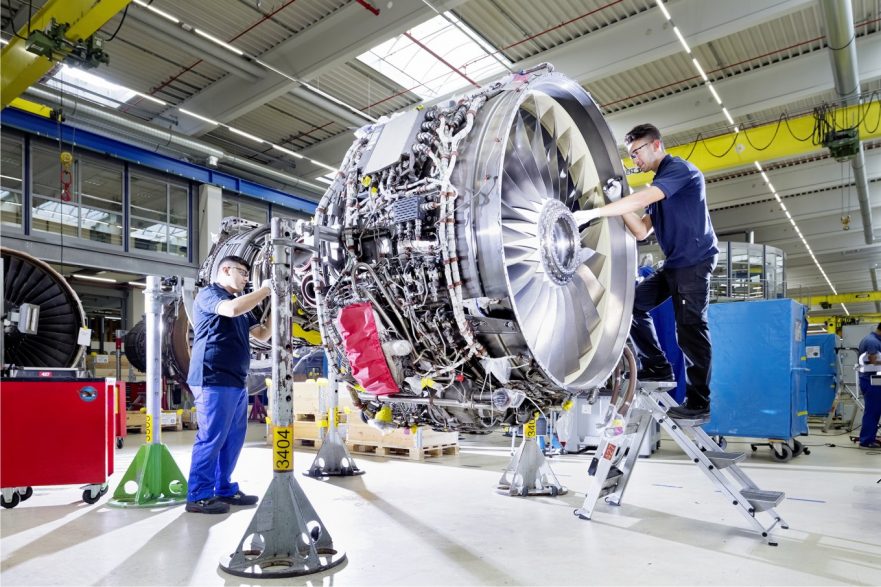By Clive Rankin
If 2018 was the year of rising cost, then 2019 is likely to follow suit. With oil prices increasing, salaries rising globally and profit margins under pressure in the aviation industry, maintenance costs can be a significant expenditure for operators. Yet when managed properly, engine MRO can be optimized, taking the expenditure i
nto the realm of necessary spend, as opposed to being a continual burden on the airlines’ bottom line.
When it comes to cost optimization, it is crucial to consider the point at which the engine is in the lifecycle. In the earlier phases of an engine’s working life, such as for younger fleets like the V2500-A5, CFM56-5B and -7, the focus should be placed on longer-term and cost-effective operations with increased on-wing times as a way of reducing costs. This can be achieved through services such as optimized fleet management – to ensure the optimal and most cost-effective removal time – customized workscoping, alternative repairs, engine trend moni-toring and on-wing support.
Once an engine matures, as we are currently seeing with the PW2000, CFM56-3 and the CF6-80C, the focus moves to reducing costs and maximizing value for operators and owners. As engines age, MRO costs increase due to the need for heavier shop visits and expensive material replacement like of life limited parts or dealing with combustion section wear and tear.
Some MROs like MTU offer ways out for operators through mature engines solutions designed to reduce costs for operators of aging engines. For its part, MTU, for instance, uses cost-effective MRO alternatives such as smart repairs, used parts and customized builds as well as alternatives to MRO such as engine lease, sale and exchange options.
End-of-life Strategies
When it comes to the end of an engine’s life, airlines should ensure they are properly guided for the best out-come. This is of course one of the key criteria in choosing an MRO. MROs such as MTU, for instance, can offer extensive support and exit strategies to maximize the value of the asset.
The MRO provider looks at each engine individually, and thanks to its extensive technical understanding and in-depth market knowledge, is able to find a suitable course of action for each asset. If an engine is still serviceable, it can be placed with a customer looking to use green-time engines, generating income for asset owners.
MROs like MTU also manage the process of lease-out, logistics, servicing and lease returns, which airlines must watch out for and take advantage of. Again, it is more beneficial for airlines to seek out MROs that can be supportive when there is need for immediate income; in this regard, the asset can also be sold, exchanged or traded with MROs like MTU. If on the other hand, an engine in parts is worth more than it is whole, material value can be maximized through teardown and material management, to the benefit of the airline.
Solutions Specific To African Operations
A further challenge faced by African operators is the harsh environments in which they fly – with altitude, heat, dust and sand and in some places humidity and heavy rains. All of these factors increase wear and cost on air-craft engines.
For continually improving results for airlines and industry partners, MTU has an industrial engineering depart-ment, for instance, which concentrates on improving repairs, processes and technologies. The MRO providers’ engineering specialists develop proprietary high-tech repair capabilities for operators flying in harsh operating environments. For instance, solutions including CMAS Resistant Thermal Barrier Coating and ERCOateco (erosion-resistant coating for HPC airfoils) which reduces scrap rates, improves the SFC of engines and saves on costs, are offered to airlines by MTU.
Operators in the Middle East have already committed to using the company’s repairs and coatings and are seeing significant cost reduction in airfoils and vane costs, which contribute significantly to overall shop visit costs.
African operators specifically could benefit from incorporating such repairs and coatings as they are a very cost-effective way to help operators to combat high material costs and also considerably increase engine on-wing times.
Essentially, MROs are expected to be partners providing innovative solutions in the unfolding aviation industry in Africa, as local airlines face the huge task of reducing their costs and increasing their chances of achieving profitability.

